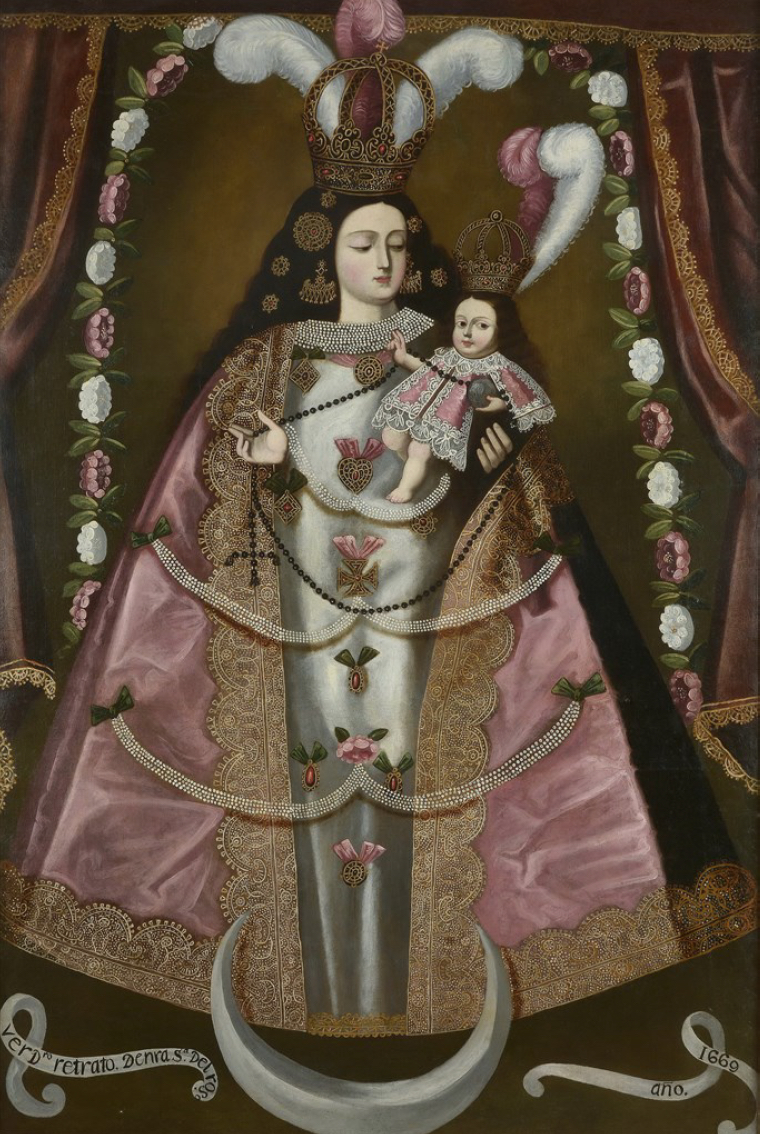
Twelve Paintings on Loan to Snite Museum of Art
| January 15, 2020 | |
| January 18, 2019 – May 16, 2020 | |
| Snite Museum of Art 100 Moose Krause Circle Notre Dame, IN 46556 | |
| Art of the Spanish Americas |
Snite Museum of Art’s upcoming exhibit Divine Illusions: Statue Paintings from Colonial South America focuses on statue paintings of the Virgin Mary from the Viceroyalty of Peru. On loan from the Thoma Foundation are 12 paintings from the 17th- and 18th-centuries.
From the Snite Museum of Art’s website:
“In eighteenth-century Spanish America, sculpted images of the Virgin Mary were frequent subjects of paintings. Some of these ‘statue paintings’ depicted sculptures famed for miraculous intercession in medieval Spain. Others captured the likenesses of statues originating in the Americas and were similarly celebrated for their divine intervention. Like the statues they portrayed, the paintings, too, were understood to be imbued with sacredness and were objects of devotion in their own right.
“Drawn from the extraordinary holdings of the internationally renowned Carl & Marilynn Thoma Art Foundation, this exhibition focuses on statue paintings of the Virgin from the Viceroyalty of Peru, a part of the Spanish Empire encompassing much of Andean South America. It centers particularly on works produced in Cuzco (Peru) and artistic centers in the vicinity of Lake Titicaca and explores the European and American dimensions of the phenomenon, iconographic variations in the genre, and what these works of art reveal about sacred imagery and its operation in Spanish colonial South America. The identities of the painters and patrons of these works remain largely unknown, but certainly some of them were native Andeans.
“The paintings in the exhibition cohere not only in their subject matter and place of production, but also in the painters’ meticulous treatment of the lavish dresses, mantles, jewels, and crowns that adorned the sculpted images. These details enhance their illusionistic effects, simulating the presence of the dressed statue itself. By making divine images from distant places present in colonial Peru and positioning them–through painting–in the company of sacred sculptures from the Americas, works in this genre traced a transatlantic spiritual geography conceived in eighteenth-century Spanish America and extending from the Andes to the Pyrenees and beyond.”
Divine Illusions is curated by Michael Schreffler, Ph.D., of the University of Notre Dame’s Department of Art, Art History & Design.
